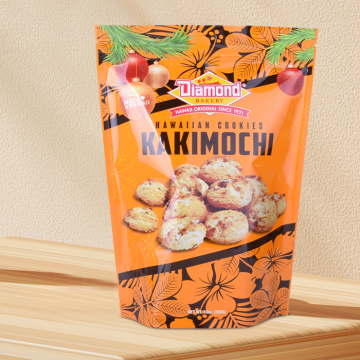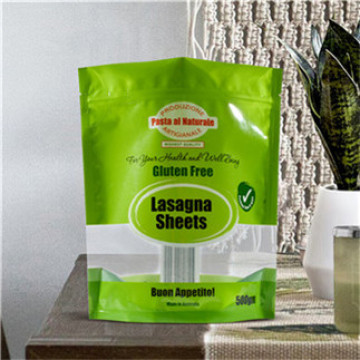
In general, the demand for convenient, fast, and fresh foods by the society's consumers is increasing. Food safety and food quality have become the most concerned issues. Now, in order to solve the problem of rot and deterioration of foods caused by physical, biochemical and harmful microorganisms, and even produce toxic substances that seriously affect the health of consumers, antibacterial packaging materials have become a hot spot.
The antibacterial packaging materials made by adding a certain amount of antibacterial agents to food packaging materials can be divided into antibacterial films, antibacterial hollow containers, antibacterial bags and antibacterial turnover containers, among which food antibacterial packaging films are the most widely used.
Requirements for packaging film substrates
There are many ways to prepare antibacterial food packaging films. One is that the antibacterial agent is made into an antibacterial masterbatch, which is prepared by extrusion or flow of an antibacterial agent or an antibacterial masterbatch and a resin monolayer, or can be formed by coextruding as a surface layer and other layers to form an antibacterial composite film. Another is obtained by coating or vapor-depositing an antibacterial agent on a resin film.
For the antibacterial film made of the antibacterial masterbatch, since the thickness of the film itself is thin, the particle size of the antibacterial particles is required to be small, and a relatively narrow particle size distribution or an organic antibacterial agent that can be dissolved in the resin is required. The addition of general antibacterial agents or antibacterial masterbatches has little effect on the mechanical properties of the film, and has no adverse effect on the printability of the film. However, the barrier properties of some films have a certain influence, so when selecting antibacterial agents and antibacterial masterbatch, attention should be paid to the influence of the addition of antibacterial agents and antibacterial masterbatch on the performance of the film, and select the appropriate antibacterial agent to ensure the performance of the package. Meet the use requirements. General choice of packaging materials are LDPE, LLDPE, EVA, cellulose film, edible film and so on.
For the method of coating or vapor-depositing the antibacterial agent on the film, the barrier properties of the different plastics vary greatly. If the substrate is damaged during the coating and coating process, it can still affect the quality of the final product. The surface properties of the plastic film surface, the polarity of the surface, the roughness of the surface, the percentage of oxygen and nitrogen atoms on the surface will affect the bond strength between the film and the antibacterial agent, thereby affecting the antibacterial performance. In addition, before the antibacterial agent is applied or vapor-deposited on the film, the surface of the film substrate should be pre-treated to improve the surface energy of the film and improve the adhesion. The packaging film substrates used for coating or vapor deposition are generally PET, PA, PVC, BOPP, LDPE, and the like.
In addition to meeting the required performance of packaging materials such as mechanical properties, printing performance, and display performance required for the packaging of foods, antibacterial packaging films for foods have high requirements for sanitary performance of food packaging materials used in the world. China's national standard GB-9687 stipulates the sanitary requirements for food packaging materials, requiring that the material be of normal color, no odor, no smell, no foreign matter, and in the evaporation residue, potassium permanganate consumption, heavy metal content, decolorization experiments, etc. Aspects meet the corresponding requirements. The FDA has also made specific provisions on the composition of food packaging materials, additive specifications, conditions of use, dissolution requirements, chronic toxicity test requirements for food packaging materials, and subchronic toxicity test requirements.
Different types of food antibacterial packaging film
1. Inorganic antibacterial film
Inorganic antibacterial agents are antibacterial agents made using silver, copper, zinc, titanium and other metals and their ions, bactericidal and bacteriostatic. In the early 1980s, Japanese scientists began to add silver compounds directly to resins, and for the first time made antibacterial plastic films with inorganic antibacterial agents.
Antibacterial mechanism: Since the inorganic antibacterial agent belongs to the dissolution contact type antibacterial agent, the antibacterial effect of the inorganic antibacterial agent film is passive. There are two explanations for the antibacterial mechanism of metal ions.
One is the contact reaction mechanism. The metal ions in the inorganic antibacterial film contact microorganisms, destroy the structure of the microorganism proteins, cause the death of microorganisms or cause dysfunction.
One is the active oxygen mechanism. The micro-metal ions distributed on the surface of the inorganic antibacterial agent film can absorb the energy in the environment, activate the oxygen in the air and water adsorbed on the surface of the packaging film, generate hydroxyl radicals and active oxygen ions, they have strong redox ability and can destroy The ability of bacterial cells to reproduce, inhibit or kill bacteria and produce antibacterial effects.
2. Organic Antimicrobial Film
Antibacterial mechanism: The main mechanism of action of organic antibacterial agents is to gradually enter the cells through anion binding to the surface of microbial cell membranes, or react with groups such as sulfhydryl groups on the cell surface, destroy the synthesis system of proteins and cell membranes, and inhibit the proliferation of microorganisms.
3. Photocatalytic inorganic antibacterial film
Antibacterial mechanism: The current photocatalytic antibacterial agent is mainly TiO2, which can generate a large number of hydroxyl radicals and oxygen radicals on the surface under the action of light. These two kinds of free radicals have strong chemical activity and can cause various microorganisms to occur. Organically decomposed and therefore have antibacterial properties.
The application of photocatalytic inorganic antibacterial film. Since the photocatalytic formulation was first introduced to Japan in 1995, one of the most widely used fields at present is food packaging.
4. Natural and polymeric antibacterial films
Other antibacterial agents include natural antibacterial films and high molecular antibacterial films. Their antibacterial mechanism is through the charge on the molecular chain and the role of microorganisms, thereby inhibiting the proliferation of microorganisms and play an antibacterial role. Currently used for food packaging are mainly chitosan, sorbic acid, turmeric alcohol.
5. Composite antibacterial agent film
The effect of the composite antibacterial agent film is mainly manifested in the following aspects: prolonging the antibacterial cycle; antibacterial performance can be produced when the concentration is low; broadening the antibacterial spectrum, inhibiting more microorganisms than any single antibacterial agent film.
At present, the composite antibacterial agent used for food packaging is a compound antibacterial triazine antibacterial agent formed by compounding an organic antibacterial agent triazine antifungal agent and a pyridine antibacterial agent on the Japanese market, and its antibacterial effect is improved. -4 times. The organic antimicrobial agent and inorganic antimicrobial agent developed by the National Engineering Research Center of Haier Chemical Engineering Plastics Co., Ltd. have overcome the problem of single function of the KFHS series antibacterial agents. In addition, nano-TiO2 can be added to inorganic silver antibacterial agents in food packaging films to solve the problem of slow antibacterial effect of silver antibacterial agents.
Food Antibacterial Packaging Film Prospect
Food antimicrobial packaging is the most promising part of active food packaging. After some foods are sterilized and aseptically packaged or vacuum-packed, it is difficult to achieve the original sterilizing effect when the food packaging is damaged or opened after storage during transportation. In this case, choosing the antibacterial film packaging is the most beneficial. It can continuously release antibacterial agents to inhibit the growth of microorganisms, ensure food safety, and extend the shelf life of foods. Let us consumers enjoy a higher quality of life.













